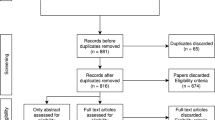Abstract
Slow rhythmic oscillations in the human cranial cavity were studied using two noninvasive methods: the bioimpedance method (volume ratios between liquid media in the cranial cavity) and transcranial ultrasound Doppler echography (variation in the blood flow in the middle cerebral artery). The combination of these methods made it possible to estimate the intracranial hemodynamics. Simultaneous recording of these parameters and their spectral analysis were carried out in healthy subjects and patients with intracranial hypertension syndrome and disturbed cerebrospinal fluid (CSF) flow. The parameters were recorded at rest and immediately after manual (osteopathic) correction. The recording and analysis were performed using a Macintosh-IIsi PC and the Chart-3.52, Cricket Graph-3.32, and Canvas-3.5 software. It was found that slow oscillations of the bioimpedance (BIM) in the frequency range 0.08–0.2 Hz were of intracranial origin and were related to the mechanisms of regulation of the blood supply to and oxygen consumption by cerebral tissue, as well as with the dynamics of the CSF circulation.
Similar content being viewed by others
REFERENCES
Magendie, F., Untersuchungen über die Hirn-und Ruckenmark-flüssigkeit, Paris, 1843.
Salathé, A., Recherches sur le méchanism de la circulation dans la cavitée céphaloarachidienne, Travaux Lab. M. Marey, 1876, vol. 2, p. 345.
Cooper, R.,Crow, C.J.,Walter, G., andWinter, A.G., Regional Control of Cerebral Vascular Reactivity and Oxygen Supply in Man, Brain Res., 1966, vol. 3, no. 2, p. 174.
Moskalenko, Yu.E.,Demchenko, I.T., andCooper, R., On the Dynamics of Spontaneous Oscillations of Blood Flow and Oxygen Tension in the Brain, Fiziol. Zh. SSSR, 1969, vol. 55, no. 7, p. 809.
Fedulova, I.P., On the Statistical Characteristics of Slow Oscillations of Blood Flow and Oxygen Tension in the Brain, Fiziol. Zh. SSSR, 1971, vol. 57, no. 4, p. 584.
Moskalenko, Yu.E. andKhil'ko, V.A., Printsipy izucheniya sosudistoi sistemy golovnogo mozga cheloveka (Principles of Studying the Vascular System of the Human Brain), Leningrad: Nauka, 1984.
Moskalenko, Yu.E.,Khil'ko, V.A.,Weinstein, G.B., et al., On the Relationship between Intracranial Pressure, Blood Content in the Cranial Cavity, and Total Cerebral Blood Flow, Fiziol. Zh. SSSR, 1983, vol. 69, no. 1, p. 92.
Moskalenko, Yu.E.,Weinstein, G.B.,Demchenko, I.T., et al., Biophysical Aspects of Cerebral Circulation, Oxford: Pergamon, 1980.
Grechin, V.B. andBorovikova, V.N., Medlennye neelektricheskie protsessy v otsenke funktsional'nogo sostoyaniya mozga cheloveka (Slow Nonelectric Processes in the Estimation of the Functional Status of the Human Brain), Leningrad: Nauka, 1982.
Sutherland, W.G., The Cranial Bowl, Mankato, Minn.: The Free Press, 1939.
Frymann, V., A Study of the Rhythmic Motions of the Living Cranium, J. Am. Osteopath. Assoc., 1971, vol. 70, no. 5, p. 928.
Moskalenko, Yu.E.,Kravchenko, T.I.,Gaidar, B.V., et al., On the Rhythmic Motions of Cranial Bones in Humans, Fiziol. Chel., 1999, vol. 25, no. 1, p. 62.
Khayutin, V.M. andLukoshkova, E.V., Spectral Analysis of Heart Rate Oscillations: Physiological Mechanisms and Complicating Phenomena, Ross. Fiziol. Zh., 1999, vol. 85, no. 7, p. 893.
Moskalenko, Yu.E. andNaumenko, A.I., On the Theory of the Electroplethysmographic Methods, Fiziol. Zh. SSSR, 1956, vol. 42, no. 3, p. 94.
Jenkner, F., Rheoencephalography, Vienna, 1986.
Moskalenko, Yu.E.,Vulsei, T.,Rovainen, K., et al., Blood Flow Dynamics in Different Layers of the Sensorimotor Cortex of the Rat Brain during Mechanical Stimulation of Vibrissae, Ross. Fiziol. Zh., 1996, vol. 83, no. 4, p. 67.
Koepchen, H., History of Studies and Concepts of Blood Pressure Waves, Mechanisms of Blood Flow Waves, Miyakawa, K. et al., Eds., Berlin: Springer, 1984, p. 3.
Vartbaronov, R.V.,Moskalenko, Yu.E., andWeinstein, G.B., On the Correspondence between Intracerebral and Peripheral Blood Circulation during Transverse Overload, Izv. Akad. Nauk SSSR, Ser. Biol., 1969, vol. 6, p. 863.
Vern, B.,Leheta, B.,Vern, J., et al., Interhemispheric Synchrony of Slow Oscillations of Cortical Blood Volume and Cytochrome aa3 Redox State in Unanesthetized Rabbits, Brain Res., 1997, vol. 775, p. 233.
Shakhnovich, A.R. andShapiro, D.A., Matematicheskie metody v izuchenii reguliruyushchikh sistem (Mathematical Methods of Study of Regulatory Systems), Moscow: Nauka, 1973.
Miyakawa, K.,Takeuchi, T.,Shimuzu, T., et al., Mechanisms of Blood Pressure Waves of the Third Order, Mechanisms of Blood Flow Waves, Miyakawa, K. et al., Eds., Berlin: Springer, 1984, p. 85.
Siegel, G. andEbeling, B., Vascular Smooth Muscle Rhythmity, Mechanisms of Blood Flow Waves, Miyakawa, K. et al., Eds., Berlin: Springer, 1984, p. 319.
Moskalenko, Yu.E.,Beketov, A.I., andOrlov, R.S., Vnutricherepnoe krovoobrashchenie: fizicheskie i khimicheskie priemy izucheniya (Intracranial Circulation: Physical and Chemical Methods of Examination), Leningrad: Nauka, 1989.
Cushing, H., Concerning a Definite Regulatory Mechanism of the Vasomotor Center Which Controls Blood Pressure during Cerebral Compression, Bull. Johns Hopkins Hosp., 1901, vol. 12, p. 290.
Roitbak, A.I., Gliya i ee rol' v nervnoi deyatel'nosti (Glia and Its Role in Nervous Activity), St. Petersburg: Nauka, 1993.
Author information
Authors and Affiliations
Rights and permissions
About this article
Cite this article
Moskalenko, Y.E., Frymann, V., Weinstein, G.B. et al. Slow Rhythmic Oscillations within the Human Cranium: Phenomenology, Origin, and Informational Significance. Human Physiology 27, 171–178 (2001). https://doi.org/10.1023/A:1011071115227
Issue Date:
DOI: https://doi.org/10.1023/A:1011071115227




